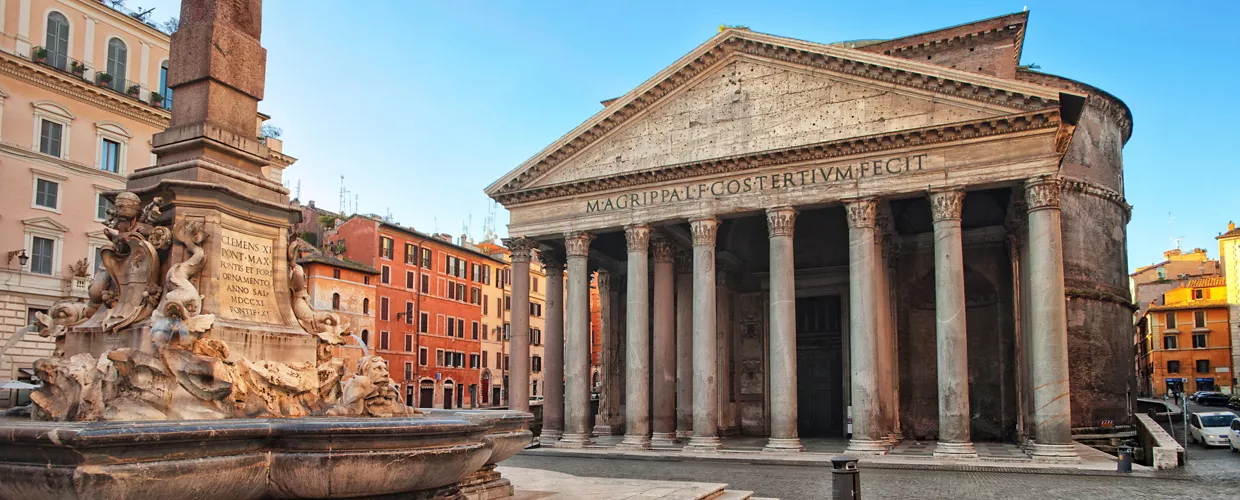This content was automatically translated. View the original text.

Overview
The largest temple in Rome
The Pantheon is one of the best-preserved Roman monuments in the world. It was built in 27 BC at the behest of Marcus Vipsanius Agrippa. Between 112 and 125 A.D., Hadrian had it rebuilt, enlarging it, reversing its orientation and opening a large porticoed square in front of the new temple.
Its dome, with its 43.44 m internal diameter, is still the widest hemispherical dome ever built in unreinforced concrete, larger than that of St. Peter’s. What is most surprising about the architecture of the Pantheon is its size: the height of the building is equal to the diameter of the dome, just over 43 meters, a feature that reflects the classic canons of rational Roman architecture. The inner part of the dome is decorated with five rows of 28 coffers that narrow upwards. An 8.95-meter-diameter oculus opens in the center, allowing natural light to penetrate and illuminate the entire building. In case of rain, the water enters the Pantheon and disappears into the 22 near-invisible holes in the floor. The oculus creates a spectacular astronomical effect whereby every 21 April at midday, a beam of light enters the Pantheon at such an angle as to perfectly hit the center of the entrance. At that exact hour, the Emperor Hadrian crossed the threshold of the temple so that the people could admire his whole figure surrounded by light, like a god.
Having fallen into a state of abandonment and looted, the Pantheon was saved from the Barbarian incursions by Byzantine emperor Foca who donated it to Pope Boniface IV. It was consecrated in 609 to Santa Maria dei Martiri and unknown Christian martyrs were buried in its basement. Later it became a burial place. Raphael and the Kings of Italy Vittorio Emanuele II, King Umberto I and Queen Margherita of Savoy were laid to rest here.
On the day of Pentecost, every year, a shower of rose petals descends from the oculus inside the Pantheon at the conclusion of the celebration of Corpus Christi.